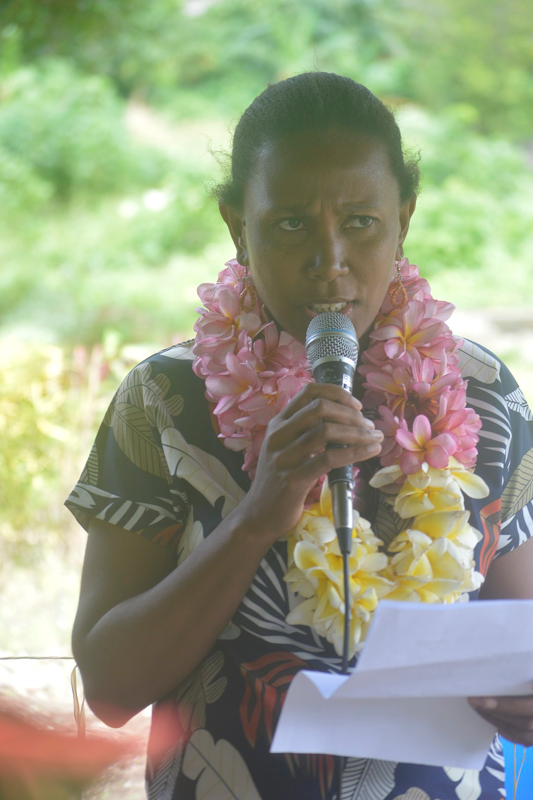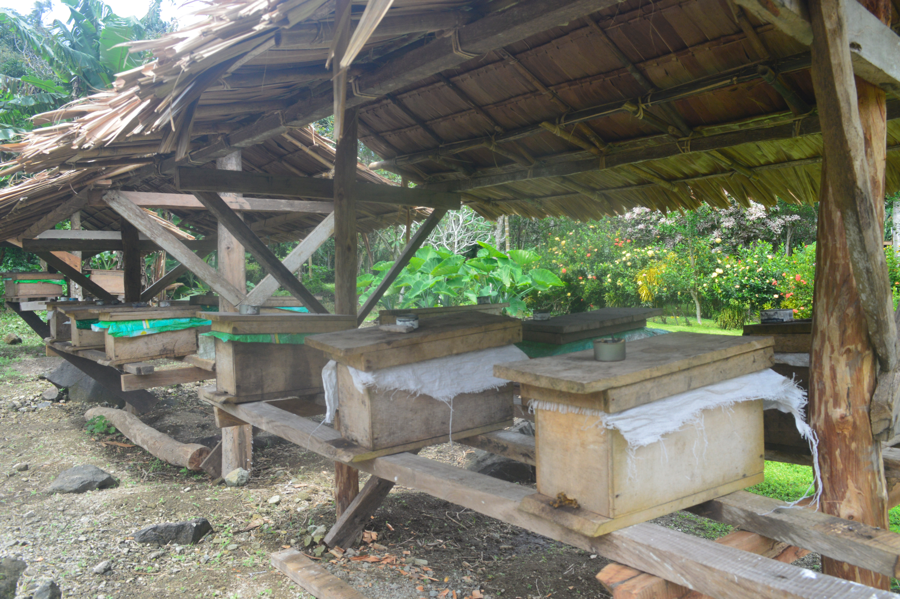Simbo Island in the Western Province is showing strong signs of reviving its once-thriving bee industry.
Once renowned for its rich, organic honey in the past years, Simbo’s beekeeping efforts had diminished over the years due to a lack of support, equipment shortages, and environmental pressures—including the threat posed by invasive pests like the Asian honeybee and varroa mite.
However, recent developments and renewed community spirit are breathing new life into the industry.
This came after a new initiative aimed at revitalizing beekeeping in the Solomon Islands has been launched by the Pacific Horticultural and Agricultural Market Access (PHARMA Plus) program in an event took place in Lengana village, located in the Western Province- Simbo Islands.
A major boost but just a beginning came recently through a four-day training workshop facilitated by Kennedy Roga, an experienced commercial beekeeper from Victoria, Australia. Mr. Roga, who was invited by Pharma Plus as a consultant, brought with him over 15 years of professional beekeeping experience.
Kennedy Roga, owner of Wantok Honey Bee told the Solomon Star in an interview that he has been running his own private beekeeping business in Victoria for years, and when he was invited to return to Simbo to share what he learned, he didn’t hesitate.
‘’Giving back to the community that helped raise me is something I value deeply,’’ he expressed.
Mr. Roga has a personal connection to Simbo—his parents lived there in the 1980s, and he spent part of his childhood on the island.
“This is about more than just bees. It’s about community, knowledge sharing, and resilience,” he added.
Mr. Roga who has 10 years experience in Commercial Beekeeping, said the training focused on both theory and practical skills.
“Over the course of four days, participants learned the fundamentals of hive management, honey harvesting, and crucially, how to identify and treat varroa mite infestations. These pests have had a devastating impact on local bee populations and honey yields.
“This training was timely,” Mr. Roga from Ranoggah but settled in Mildura said.
“Some participants were already keeping bees, others were complete beginners. But the response was encouraging. Many are now seeing beekeeping not just as a tradition, but as a potential livelihood and environmental service,’’ he adds.
Community members who joined the training expressed optimism and gratitude, noting that the skills gained will help improve honey quality and sustainability.
Some participants are now planning to increase their hive numbers, apply modern techniques, and explore ways to market their honey both locally and beyond.

Support from Non Government Organisations and local authorities have also been pivotal. Plans are underway to provide further technical assistance and introduce new tools to improve honey extraction and storage.
Roga said there is a need for more collaboration between responsible Government Ministries and other key stakeholders to support and assist local Bee Keeping Production and the industry across the country.
“We see this as an opportunity not only to generate income but also to preserve our environment,” one local beekeeper said.
“Bees play a vital role in pollination and maintaining biodiversity.
‘’If current efforts continue, Simbo could reclaim its reputation as a hub for high-quality, organic honey in the Solomon Islands,’’ he added.
Since the introduction of logging activities on certain islands, including increased movement of logging vessels between 2014 and 2020, Simbo has experienced a devastating impact on its bee population.
Approximately 300 bee hives have been wiped out due to the spread of the invasive Asian bee, commonly referred to as the wild bee, which is believed to have entered Simbo through sea routes leading to Lale in the nearby Ranongga Islands.
The original Simbo bee colonies were introduced by Mr. Stephen Suti, who brought hives from farmers in Ulawa, Makira Province. At its peak in 1999, Simbo’s honey production reached an estimated 70 tons annually. However, by 2023, that figure had drastically dropped to just one to two tons per year.
This significant decline is attributed to several ongoing challenges. Among them are the lack of essential infrastructure to support large-scale honey production, including proper facilities for honey extraction, processing, packaging, and quality control.
Additionally, local beekeepers have faced limited access to training, modern hive management practices, and resources for disease prevention and control all critical factors in improving productivity and maintaining honey quality.
By ULUTAH GINA
Solomon Star, Gizo




